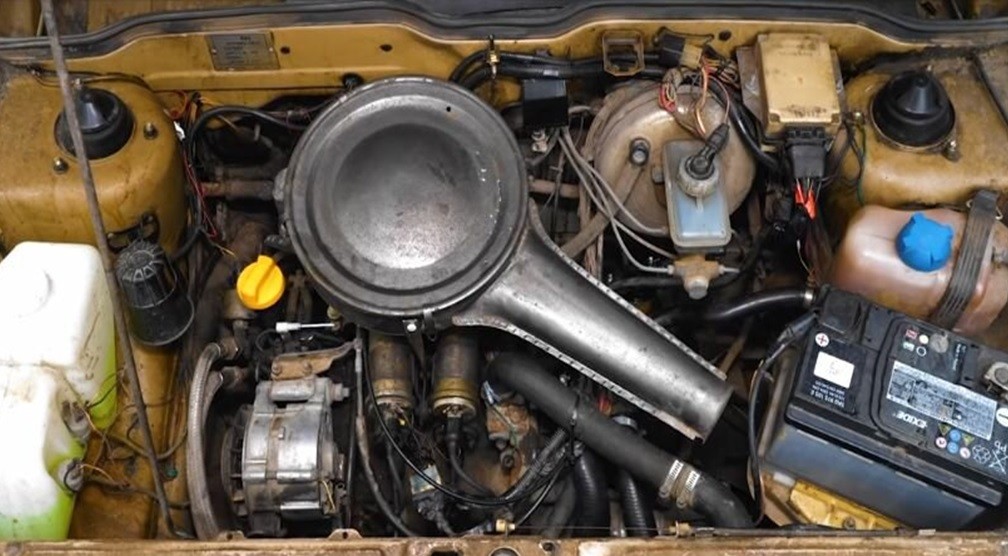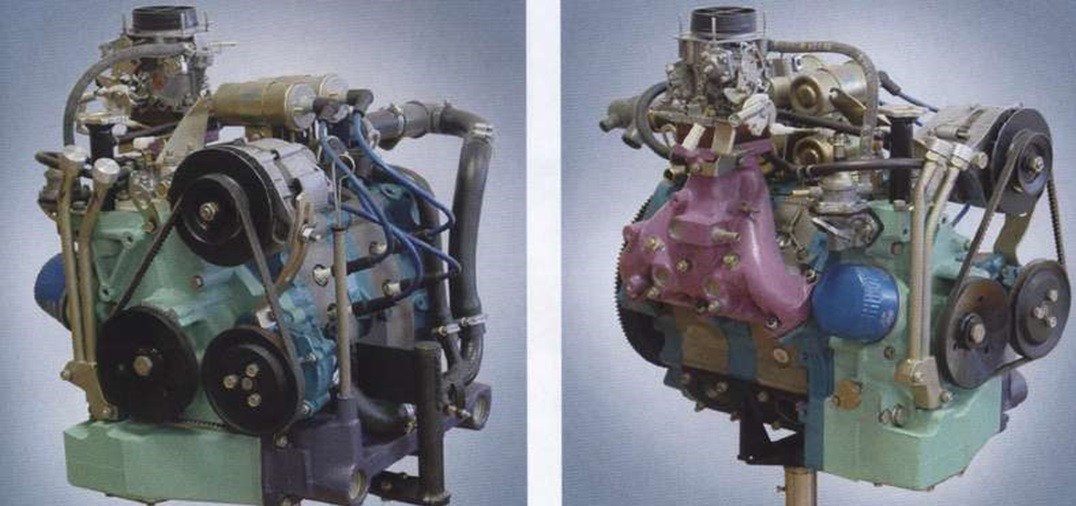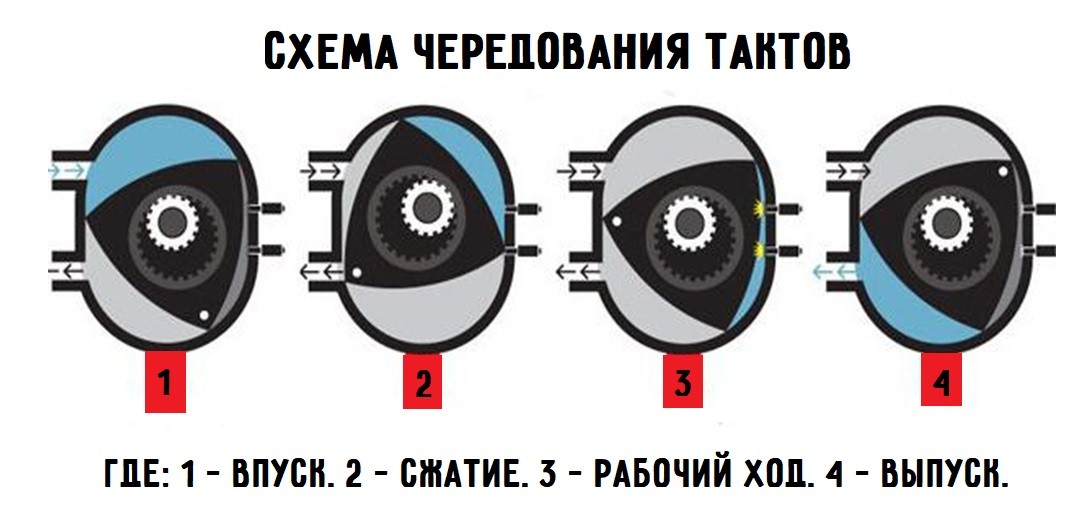
Engine VAZ-415
Content
A continuation of the development of the creation and production of rotary engines was the next development of VAZ engine builders. They designed and put into production a new similar power unit.
Description
By and large, the VAZ-415 rotary engine was a refinement of the previously produced VAZ-4132. In comparison with it, the created internal combustion engine has become universal - it can be installed on rear-wheel drive Zhiguli, front-wheel drive Samara and all-wheel drive Niva.
The main difference from the well-known piston engines was the absence of a crank mechanism, timing, pistons, and drives of all these assembly units.
This design gave a lot of advantages, but at the same time endowed car owners with unexpected troubles.
VAZ-415 is a rotary gasoline aspirated engine with a volume of 1,3 liters and a capacity of 140 hp. with and a torque of 186 Nm.

The motor was produced in small batches and installed on VAZ 2109-91, 2115-91, 21099-91 and 2110 cars. Single installations were carried out on VAZ 2108 and RAF.
The positive aspect of the VAZ-415 is its indifference to fuel - it works equally smoothly on any brand of gasoline from A-76 to AI-95. It should be noted that fuel consumption at the same time wished for the best - from 12 liters per 100 km.
Even more striking is the "love" for oil. Estimated oil consumption per 1000 km is 700 ml. On real new engines, it reaches 1 l / 1000 km, and on those approaching repair, 6 l / 1000 km.
The mileage resource declared by the manufacturer of 125 thousand km was almost never maintained. In 1999, the engine was considered the champion, having passed almost 70 thousand km.
But at the same time, it must be taken into account that this motor was mainly intended for cars of the KGB and the Ministry of Internal Affairs. A few units of these units fell into private hands.
Thus, the concept of "economy" is not for the VAZ-415. Not every ordinary car enthusiast will like such fuel consumption, a relatively short service life, and not cheap spare parts for repairs.
In appearance, the engine itself is slightly larger than the VAZ 2108 gearbox. It is equipped with a Solex carburetor, a dual ignition system: two switches, two coils, two candles for each section (main and afterburning).
Attachments are compactly grouped and have easy access for maintenance.

The device of the engine is quite simple. It does not have the usual KShM, timing and their drives. The role of the pistons is performed by the rotor, and the cylinders are the complex inner surface of the stator. The motor has a four-stroke cycle. The diagram below shows the operation of an internal combustion engine.

The rotor (in the diagram, a black convex triangle) makes a cycle of the working stroke three times in one revolution. From here, power, almost constant torque and high engine speeds are taken.
And, accordingly, increased fuel and oil consumption. It is not difficult to imagine what kind of friction force the vertices of the rotor triangle have to overcome. To reduce it, oil is fed directly into the combustion chamber (similar to the fuel mixture of motorcycles, where oil is poured into gasoline).
It is clear that in this case, compliance with environmental standards for exhaust cleaning is almost impossible.
You can learn more about the design of the motor and the principle of its operation by watching the video:
Technical specifications
| Manufacturer | Concern "AvtoVAZ" |
| engine's type | rotary, 2-section |
| Release year | 1994 |
| Number of sections | 2 |
| Volume, cm³ | 1308 |
| Power, hp from | 140 |
| Torque, Nm | 186 |
| Compression ratio | 9.4 |
| Minimum idle speed | 900 |
| Applied oil | 5W-30 – 15W-40 |
| Oil consumption (calculated), % of fuel consumption | 0.6 |
| Fuel system | carburetor |
| Fuel | gasoline AI-95 |
| Environmental standards | Euro 0 |
| Resource, outside. km | 125 |
| Weight, kg | 113 |
| Location | transverse |
| Tuning (without loss of resource), l. With | 217* |
*305 l. c for VAZ-415 with injector
Reliability, weaknesses, maintainability
Reliability
Despite many unfinished moments, the VAZ-415 is considered a reliable engine. This was lucidly expressed on one of the cut forums from Novosibirsk. He's writing: "... the engine is simple, relatively reliable, but the trouble is with spare parts and prices ...».
An indicator of reliability is the mileage to overhaul. The resource declared by the manufacturer was rarely kept, but there were interesting facts in the history of the motor.
So, the magazine "Behind the wheel" describes the situation with a rotary engine installed on the RAF. It is emphasized,... the engine finally wore out by 120 thousand km, and the rotor was actually not subject to repair ...».
Private car owners also have experience in long-term operation of internal combustion engines. There is evidence that the unit provided a mileage of over 300 thousand km without major repairs.
The second main factor that speaks about reliability is the margin of safety. The VAZ-415 has an impressive one. Only one installation of the injector increases the engine power by more than 2,5 times. Interestingly, the engine can easily withstand high speeds. So, spinning up to 10 thousand revolutions is not the limit for him (operational - 6 thousand).
The AvtoVAZ design bureau is constantly working to improve the reliability of the unit. Thus, the problem of increasing the efficiency of bearing assemblies, gas and oil scraper seals, warping of the metal of body assemblies due to their different heating was solved.
VAZ-415 is characterized as a reliable engine, but only in the case of timely and thorough care for it.
Weak spots
VAZ-415 inherent weaknesses of its predecessors. First of all, car owners are not satisfied with the high consumption of oil and fuel. This is a feature of the rotary engine, and you have to put up with it.
On this occasion, the motorist wooden_goblin from Makhachkala writes: “... though the consumption is almost a liter of oil per 1000, and even the oil needs to be changed every 5000, and candles - every 10000 ... Well, spare parts are made only by two factories ...».
Phillip J speaks in tone to him: “... the most unpleasant thing is not frugality. Rotary "eight" eats 15 liters of gasoline per 100 km. On the other hand, the engine, according to its developers, does not care what to eat: at least the 98th, at least the 76th ...».
The special design of the combustion chamber does not allow to have the same temperature of all surfaces of the internal combustion engine. Therefore, inattentive and aggressive driving often leads to overheating of the unit.
Equally important is the high level of toxicity of exhaust gases. For a number of reasons, the engine does not meet the environmental standards adopted in Europe. Here we must pay tribute to the manufacturer - work in this direction is underway.
A big inconvenience is the process of servicing the motor. Most of the service stations do not take such internal combustion engines. The reason is that there are no specialists working on rotary engines.
In practice, there are only two car service centers where you can service or repair the unit with high quality. One is in Moscow, the second in Togliatti.
Maintainability
VAZ-415 is simple in design, but not one that can be repaired in any garage. First, there is a certain problem with finding spare parts. Secondly, the unit reacts very painfully to the quality of parts. The slightest discrepancy leads to its failure.
One of the available options is to purchase a contract engine. It is easy to find sellers of rotary internal combustion engines on the Internet. At the same time, you need to be prepared for the fact that the cost of these internal combustion engines is quite high.
Despite the promise of rotary engines, the production of the VAZ-415 was discontinued. One (and perhaps the most important) of the reasons was the high cost of its production.

